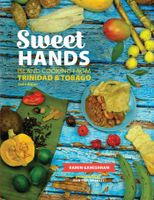Label
All
0
Clear all filters
Foreword
Appears in
Published 2018

To understand your taste is to appreciate not only what, among other things, distinguishes you from others, but to appreciate the history of flavors that proceeded you, the places your ancestors lived, the households they built, the meals they made.
Families from all corners of the earth are, after all, rift with stories of unexplained habits and food preferences. The six-pronged candlestick to which the Catholic farm wife in Nebraska religiously adds a candle each night in the six days before Christmas turns out to have traveled from a Jewish ghetto in Warsaw to the Midwestern plains. The “family secret” of cutting a pot roast in half and cooking it in two vessels becomes, upon investigation, less about the quality of the dish and more about the fact that a great-great-grandmother did not have a pot large enough to contain the meat.
Advertisement
Advertisement
The licensor does not allow printing of this title


